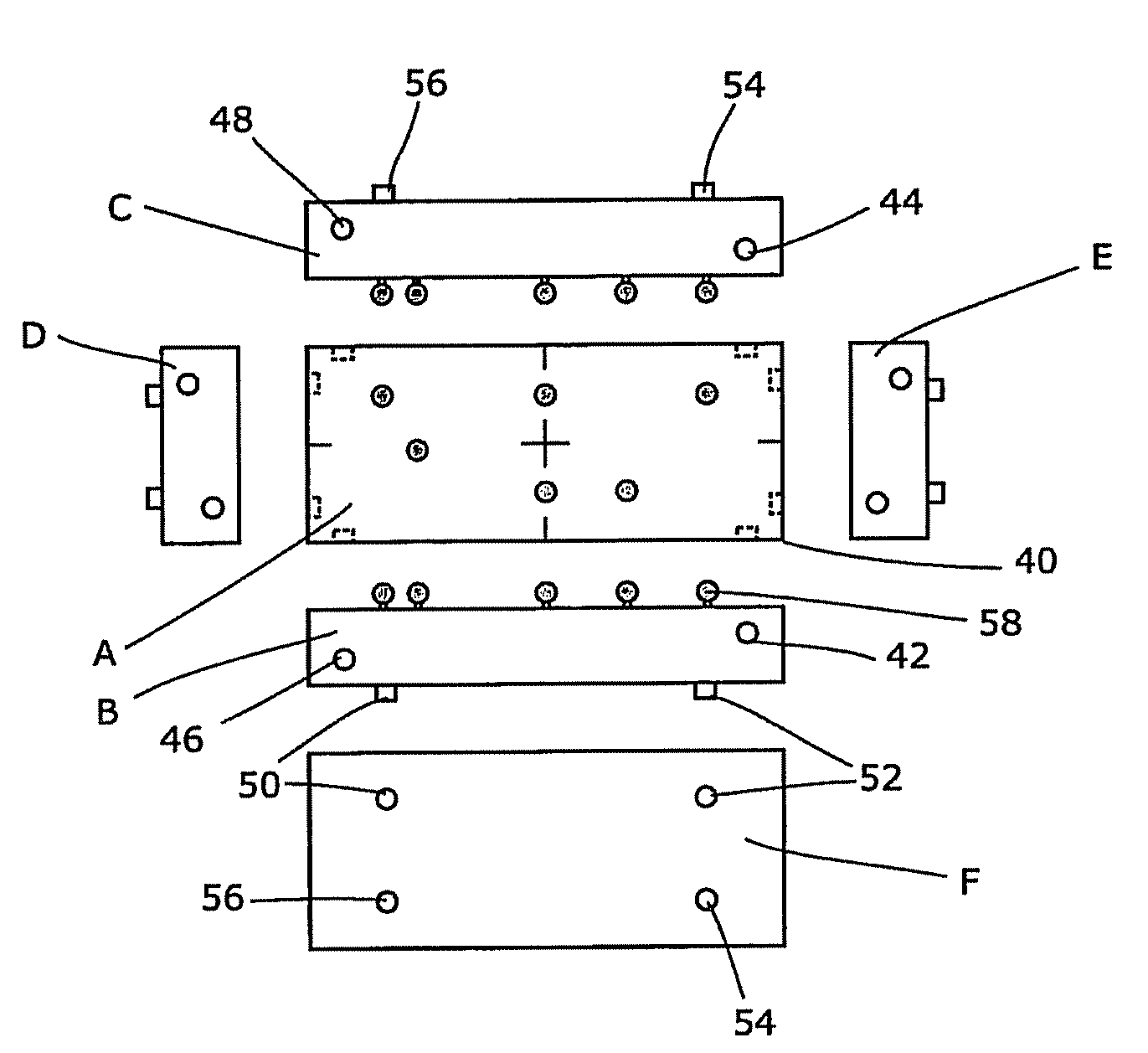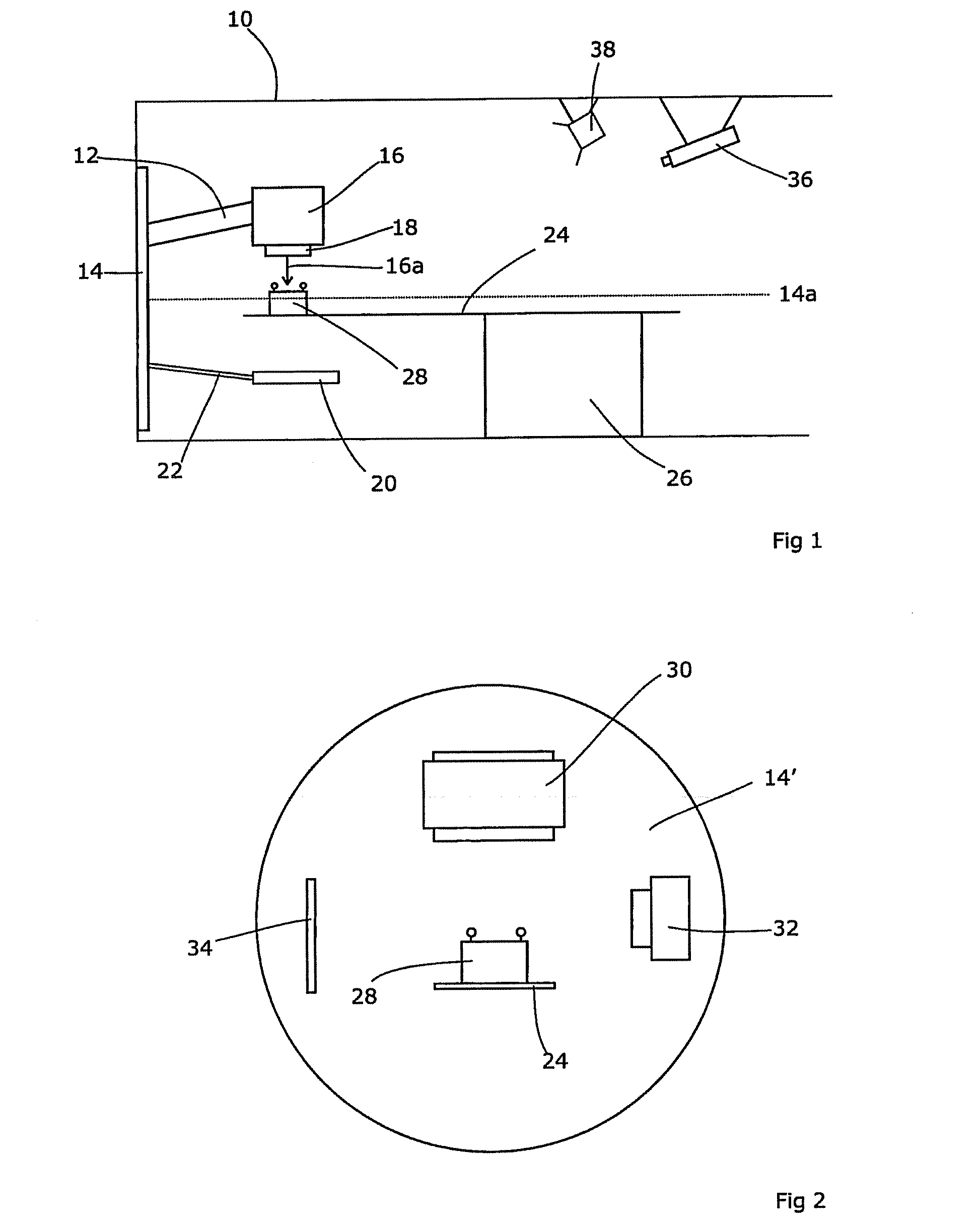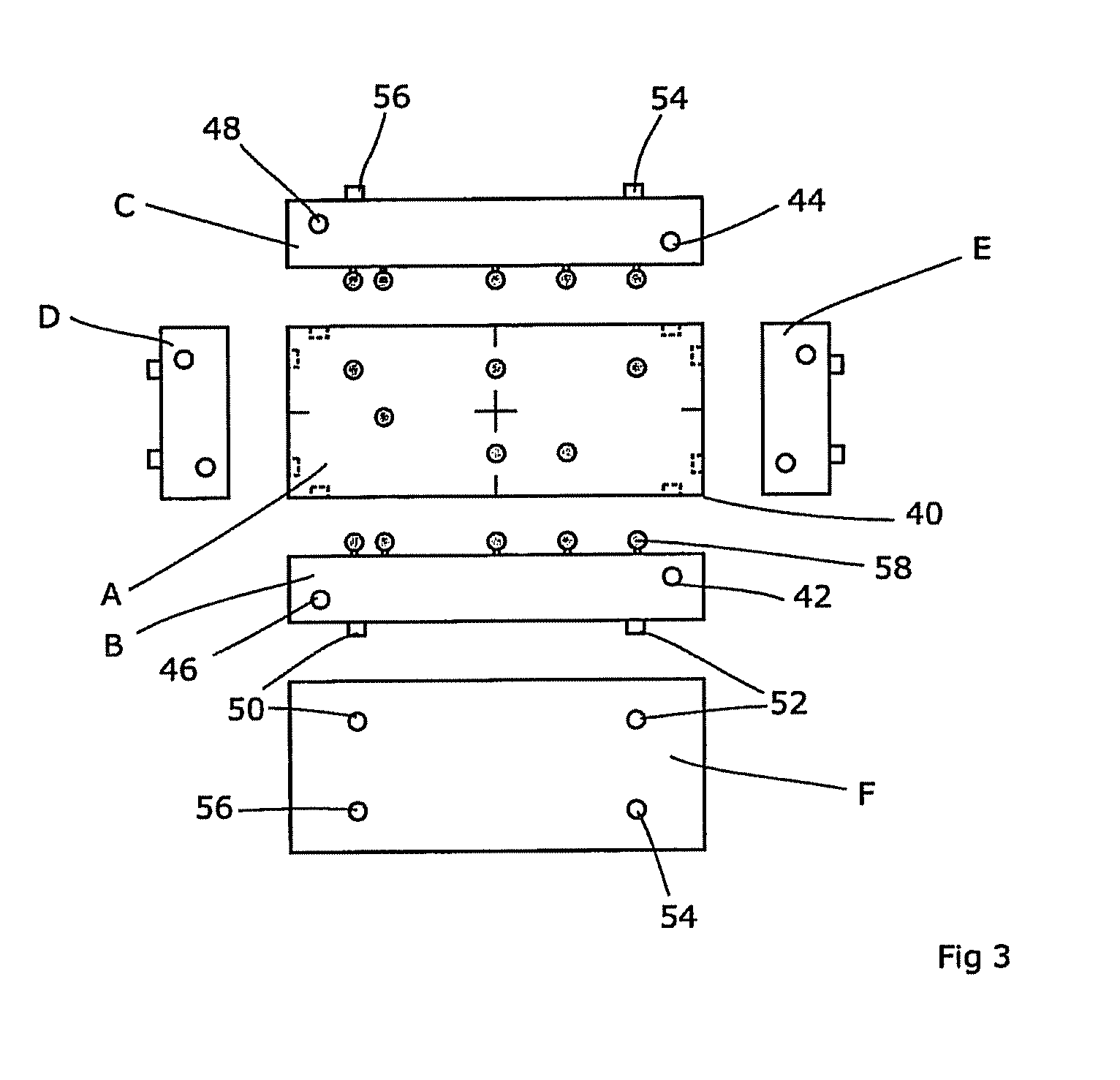Radiotherapeutic apparatus
a radiotherapy and apparatus technology, applied in the field of radiotherapy apparatus, can solve the problems of direct correlation and limitation of the clinical effectiveness of the device, and achieve the effects of reducing the uncertainty of the isocentre location, less volume, and aggressive treatment of the tumour
- Summary
- Abstract
- Description
- Claims
- Application Information
AI Technical Summary
Benefits of technology
Problems solved by technology
Method used
Image
Examples
Embodiment Construction
[0021]FIG. 1 shows a typical radiotherapy apparatus. A dedicated room 10 is fitted with a linear accelerator arm 12 which extends from a rotateable support 14 and ends with an x-ray head 16 for the production of therapeutic and / or diagnostic radiation. In this example, the x-ray head is adapted to produce radiation of a range of energies varying from kV energies suitable for diagnostic purposes to MV energies suitable for therapeutic use. This has the advantage that the two sources are inherently aligned in that they emanate from the same apparatus. A collimator set 18 is provided in order to shape the beam as required and contains aperture collimators, block collimators and multi-leaf collimators.
[0022]A flat panel imager 20 is provided, located on an extendable arm 22 attached to the rotateable support 14 at a location opposite the linear accelerator arm 12, i.e. spaced 180° therefrom. When the head 16 is producing low energy radiation, the imager 20 can detect the resulting image...
PUM
 Login to View More
Login to View More Abstract
Description
Claims
Application Information
 Login to View More
Login to View More - R&D
- Intellectual Property
- Life Sciences
- Materials
- Tech Scout
- Unparalleled Data Quality
- Higher Quality Content
- 60% Fewer Hallucinations
Browse by: Latest US Patents, China's latest patents, Technical Efficacy Thesaurus, Application Domain, Technology Topic, Popular Technical Reports.
© 2025 PatSnap. All rights reserved.Legal|Privacy policy|Modern Slavery Act Transparency Statement|Sitemap|About US| Contact US: help@patsnap.com



